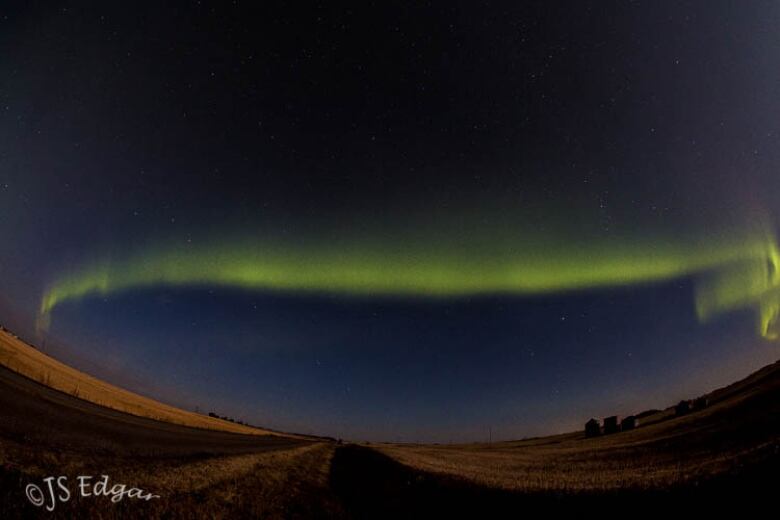Yet another chance to catch the northern lights this week
Unusual solar activity produces several powerful flares in a week

For the past week, the sun has produced a flurry of unusual activity, which bodes well for those who want to catch a glimpse of the northern lights.
Last week, the sun unleashed the most powerful solar flare in more than a decade. That was followed by a powerful coronal mass ejection (CME), a fast-moving stream of particles that travels along the solar wind. If Earth is in its path, those particles can interact with our magnetosphere, giving us abeautiful display of northern lights.
People across Canada and the Northern Hemisphere who were underclear skieslast Thursday saw the sky dancein bright colours.

Following that solar flare, the sunspot responsible just kept on going, producing several more X-class solar flares, which are the most powerful kind.
On Sunday, it produced an X8.2 flare, just slightly less powerful than the X9.3 produced on Sept. 6. That was followed by a coronal mass ejection, which is anticipated to reach Earth on Sept. 13.
Believe it or not! NASA models show #solarstorm launched during the X8.2-flare may actually graze Earth! Expect mild disturbance by 9/13! pic.twitter.com/h1BloLGJs6
—@TamithaSkovOn top of that, a coronal hole on the sun is producing a quick stream of particles that is also travelling along the solar wind.
The U.S. Space Weather Prediction Center (SWPC) is calling for a moderate geomagnetic storm on Wednesday, but you may want to take a chance and look up both Tuesday and Wednesday nights, as there is no way to know precisely when it will reach Earth.
The sun goes through an 11-year cycle with a solar maximum, where there is a rise insolar activity, such as sunspots and solar flares, followed by a solar minimum with less activity. Despite the recent appearance of sunspots and flares,the sun is heading toward a solar minimum, expected sometime between 2019 and 2020.
If you'd like to keep an eye on the northern lights, or aurora borealis, forecast, you can visit SWPC's30-minute forecast.












_(720p).jpg)


 OFFICIAL HD MUSIC VIDEO.jpg)
.jpg)



























































































